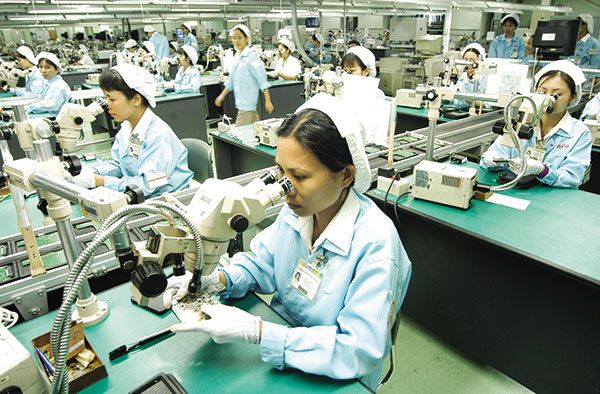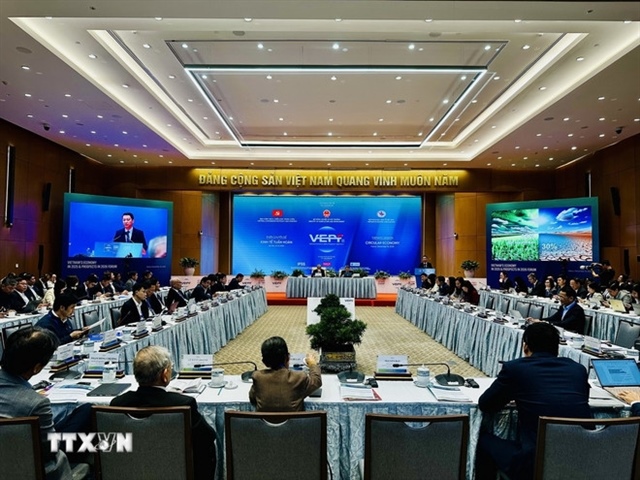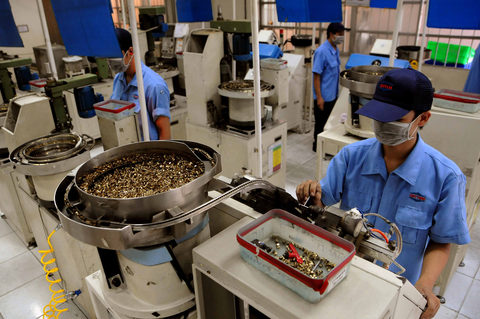Working on new ways to lure FDI
Working on new ways to lure FDI
As local salaries rise and global trends shift, Vietnam is drafting a new foreign direct investment attraction strategy for the upcoming years, with a focus on some prioritised sectors to bring added value to the economy.

Under the draft, which is being worked on by the Ministry of Planning and Investment (MPI), Vietnam plans to focus on sectors that the country has strong advantages in, and target things such as high technology, new branding, new marketing, and high value which foreign firms can bring to the table.
The five sectors are high-tech/ICT, processing and manufacturing, supporting industries, tourism, and high-tech agriculture.
According to Nguyen Mai, chairman of the Vietnam Association of Foreign Investment Enterprises, competitiveness in the region has changed, while key global trends have taken shape. Investments from the EU and US in Vietnam are currently lagging behind those from other Asian countries, and will continue to do so as long as the country does not create a new foreign direct investment (FDI) approach.
“Offering investment incentives is okay for a certain duration, but Vietnam should not rely on this to attract FDI anymore because we have other effective tools,” he said.
Mai said that in 2014, Vietnam could not compete with China in FDI attraction, but now it can. China’s changing investment policies have caused foreign investors to exit the country and seek greener pastures, including Vietnam and Indonesia.
In this new FDI landscape, Vietnam cannot compete with India in terms of cheap labour cost and skilled workforce; wages in India average much less than they do in Vietnam. Regarding FDI attraction in high-tech, Vietnam is much less appealing than India.
The new FDI attraction strategy will prove important, as low wages are not an advantage for Vietnam any longer.
“It’s an absolutely critical time for Vietnam. Wages are going up. It’s the objective of the government. Meanwhile, other countries in the region like Myanmar, Cambodia, or Bangladesh are offering much lower wages than Vietnam,” said Simon Nihal Bell of Armillary, a firm which provides investment consultation, specialising in emerging market investment strategies.
“If Vietnam continues to base its strategy on cheap wages, it will lose. As salaries go up, Vietnam will no longer be successful attracting people to set up factories here to make T-shirts cheaply and to make phones cheaply. Vietnam needs to work out how to attract people here to make things because of our skills and high quality, excellent business environment and high wages – not because of low wages.”
Bell cited the US and UK as examples. They are the countries attracting the most FDI in the world. They can attract great amounts of FDI even though they have very high wages. “Why people go there is because of skills and technology. That’s what we want Vietnam to have,” he said.
According to the World Bank, which is supporting Vietnam in building this new strategy, amid the key global trends in Industry 4.0, free trade agreements, and new economic models, the proposed target sectors would be feasible and valuable for Vietnam. Foreign investors in these sectors can bring in high technology, capital, and research-and-development (R&D) expertise that domestic firms do not have.
For example, in the secondary processing industry for premium metals and chemicals, both the domestic market and those in the region have strong and growing demand for these products. Vietnam has huge reserves of input materials such as hydrocarbons and minerals, as well as competitive energy and labour costs.
“Domestic firms will take years to develop their R&D capacity, while the processing of such metals and chemicals requires a high and complicated level to meet the standards of original equipment manufacturers,” said a representative of the World Bank.
More importantly, the more FDI Vietnam lures in this sector, the higher the added value it gains for the economy. This will help the country increase the competitiveness of its value chain and significantly increase the value of input materials by developing higher-value products. The World Bank estimates that the average added value per worker in this sector is around $30,000-40,000 a year.
In fact, many international manufacturers – including big Japanese and South Korean names in electronics, automobiles, and motorbikes – have complained that although they have brought with them their tier-one and tier-two suppliers, these have to import the necessary premium metals, plastics, and chemicals to produce spare parts. This increases costs and lengthens production time.
“The biggest challenge for being competitive is that they have to import everything. That makes costs rise. The number-one value addition is to make sure we are establishing a supporting industry in Vietnam,” Bell noted. “Around 200,000 cars are produced per year in Vietnam, while in Thailand it’s more than two million cars a year. We have the same environment and technology, but we are far behind in manufacturing compared to China and or even India.”
Vietnam has made great achievements in FDI attraction thanks to improvements in the business climate. In 2016, together with Indonesia, the country emerged as one of the most successful nations in ASEAN in FDI attraction.
The United Nations Conference on Trade and Development statistics showed that the FDI-to-GDP ratio in 2016 was 6.1 per cent, higher than many countries in the region, including Malaysia (3.3 per cent), Myanmar (3.2 per cent), the Philippines (2.6 per cent), India (2 per cent), China (1.2 per cent), and Thailand (0.4 per cent).



















